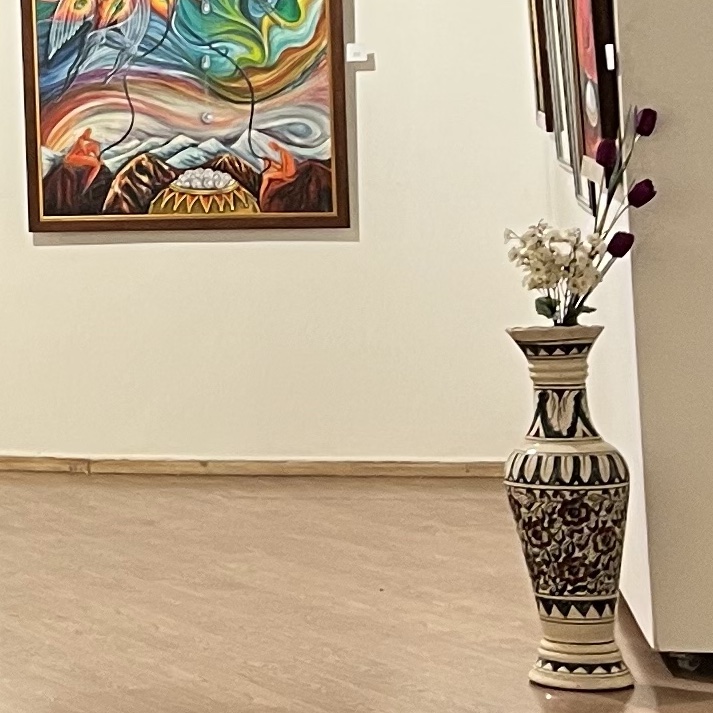First, the story…
I have a pair of vases that I had once bought for the Reception area of my office. The vases are pretty but they aren’t special or unique…in fact, there are many other vases that look just like this pair. The vases are hand-painted but have no special or unique pattern on it – in other words, there’s nothing special about the vases. You can see one of these in this picture from my art exhibition “Revelations” at the Lalit Kala Akademi.
And yet, half a dozen visitors to the show looked at the vases and wondered if they too were art. The vases with flowers in them didn’t look like anything else on display, they were there to welcome the visitors, and yet, just because they were present in the gallery, some visitors thought of them as art.
There could be a myriad different explanations for this curious phenomenon. The one that strikes home to me is that of context. Art galleries create a context of art – and everything that’s present in an art gallery, must be art.
And this got me wondering if there’s an effect called the context effect...and guess what, there’s such an effect! According to the netizen’s encyclopedia (Wikipedia,) Context effect is:
an aspect of cognitive psychology that describes the influence of environmental factors on one’s perception of a stimulus.
If you scroll down the same Wikipedia page, you find another interesting tidbit on “Perception of Art.” It says,
Context also affects the perception of artwork… … … While specific results depend heavily on the style of the presented artwork, overall, the effect of context proved to be more important for the perception of artwork then the effect of genuineness
And so, the fact that the vases were present in an art gallery may have resulted in the visitors perceiving them as as art, overshadowing the effect of genuineness (the actual fact that they were more craft than art.)
So we return to the primary question and wonder, “what is art?” In the post, “Skill and Art are two sides of an Inequation,” I attempted to differentiate between art and skill. At the time of writing that post, I completely missed out “Context,” which probably is one of the most important variables in the art equation. (I wonder how many more such variables still remain hidden.)
And what if the art that is sold in galleries was sold in a craft-bazaar? Will the perception of artistic value be destroyed and in the context of the craft-bazaar, it will be perceived as craft?
Think, reader, think!


Leave a Reply